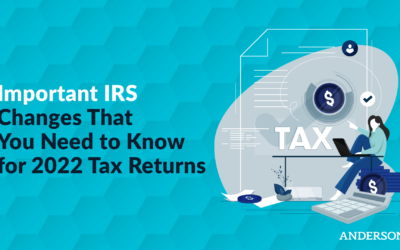Updated April, 2022
There are a number of retirement planning vehicles for investors and business owners to build their ideal retirement. If you’re self-employed with no employees or are the sole employee of your corporation, you may have some questions about the options available to you. Whether you’re self-employed with no employees or the sole employee of your corporation, here are your retirement planning options.
Self-Employed with No Employees vs. Sole S or C Corporation Employee
First, let’s cover our bases. What does it mean to be “self-employed”? Generally, a self-employed individual is a sole proprietor, a partner in a business partnership, or an independent contractor.
Self-employment is different than being the sole employee of an S or C corporation. As the sole employee of a corporation (regardless of whether it’s a traditional C corporation or an S corporation), the corporation is a separate legal entity from you. As a self-employed individual (regardless of whether you’re a sole proprietor, partner in a partnership, or an independent contractor), this legal distinction between employer and employee does not exist.
For those who are self-employed and do not have employees as well as those who are sole employees of S or C corporations, there are six retirement plan options. Let’s look into each.
For more information on how to determine the best retirement planning vehicle for your specific situation, schedule a free strategy session now.
Traditional IRAs
Again, let’s cover our bases first. An IRA is an “individual retirement account” that comes in four different flavors as of 2022: the traditional IRA, the Roth IRA, the SEP IRA, and the SIMPLE IRA. We’ll discuss these different types in more detail below, but first let’s cover the plain-vanilla traditional IRA.
IRAs are tax-advantaged accounts designed to provide tax benefits to individuals who save for retirement. The type of IRA established can vary depending on who actually sets the account up. Individuals create traditional and Roth IRAS, whereas small business owners and self-employed folks create SEP and SIMPLE IRAs. Contributions to a traditional IRA happen with pre-tax dollars; thus, taxes are due upon distribution. IRAs are designed for retirement savings, so there is a 10% penalty for early withdrawal. Early withdrawal includes any withdrawals made before the account holder reaches age 59.5. This 10% early-withdrawal penalty is on top of federal and applicable state taxes that will be due.
Usually, contributions to a traditional IRA are tax-deductible. However, this may not be the case if your income exceeds certain thresholds. For single or head-of-household taxpayers, traditional IRA contributions are tax-deductible if the taxpayer’s MAGI (modified adjusted gross income) is $68,000 to $78,000 when covered by a workplace retirement plan. For married joint-filers, traditional IRA contributions are tax-deductible until the taxpayer’s MAGI is $109,000 to $129,000 for 2022. Above these limits, the deductions become partial.
Tax & Asset Protection Workshop
Learn about Real Estate & Asset Protection at our next
FREE LIVESTREAM
Traditional IRA Limits for 2022 – Self-Employed with No Employees
- Maximum annual employee contribution: $6,000 ($7,000 if age 50+)
- Maximum annual employer contribution: N/A
Traditional IRA Limits for 2022 – Sole Employee of an S or C Corporation
- Maximum annual employee contribution: $6,000 ($7,000 if age 50+)
- Maximum annual employer contribution: N/A
SEP IRAs
SEP stands for “simplified employee pension,” so a SEP IRA is a “simplified employee pension individual retirement account.” These are most often used by small businesses or the self-employed since only certain types of businesses can start SEP IRAs. This type of retirement planning vehicle was designed for businesses that may not otherwise sponsor retirement plans, including sole proprietorships and partnerships. Some of the main benefits of SEP IRAs is that they have higher contribution limits than traditional IRAs, employers receive tax deductions for their contributions to employee plans, and employers can make employee-plan contributions at the discretion of the employer.
For tax purposes, a SEP IRA is treated the same as a traditional IRA. Overall, a SEP IRA is fundamentally the same as a traditional IRA except that a SEP IRA allows employers the ability to make contributions. One of the main benefits of SEP IRAs for employees is that employer contributions vest immediately.
SEP IRA Limits for 2022 – Self-Employed with No Employees
- Maximum annual employee contribution: N/A
- Maximum annual employer contribution: up to 25% of your net self-employment income, not to exceed $61,000
SEP IRA Limits for 2022 – Sole Employee of an S or C Corporation
- Maximum annual employee contribution: N/A
- Maximum annual employer contribution: up to 25% of your wages, not to exceed $61,000
SIMPLE IRAs
SIMPLE IRAs can be used by most small businesses that have fewer than 100 employees. SIMPLE stands for “savings incentive match plan for employees.” With SIMPLE IRAs, employers have the choice of either contributing 2% to all employees or an optional matching contribution of 3%. Employer contributions to SIMPLE IRAs are tax-deductible to the employer, and these types of plans are relatively inexpensive to establish and maintain.
SIMPLE IRAs have some disadvantages that should be considered. The primary disadvantage of using this type of plan is that business owners cannot contribute as much as with other retirement plans. Furthermore, a SIMPLE IRA cannot be rolled over into a traditional IRA without a two-year waiting period that starts when the employee first joins the plan.
SIMPLE IRA Limits for 2022 – Self-Employed with No Employees
- Maximum annual employee contribution: $14,000 ($17,000 if age 50+)
- Maximum annual employer contribution: Plus either: 1. A matching contribution equal to the lesser of 3% of your defined self-employment income or the amount of your elective deferral; or 2. A nonelective contribution of 2% of your defined self-employment income limited to no more than $305,000
SIMPLE IRA Limits for 2022 – Sole Employee of an S or C Corporation
- Maximum annual employee contribution: $14,000 ($17,000 if age 50+)
- Maximum annual employer contribution: Plus either: 1. A matching contribution of 3% of your employee deferral up to 3%; or 2. A nonelective contribution of 2% of compensation to all eligible employees (you) whether or not you make a salary deferral
Roth IRAs
Roth IRAs are a different breed than the rest of the IRAs we’ve covered thus far. With Roth IRAs, contributions are made with post-tax dollars instead of pre-tax dollars. This means that qualifying withdrawals from a Roth IRA are tax-free (since you’ve already paid the taxes). Roth IRAs are ideal for those who expect to be in a higher income tax bracket upon retirement than they currently are. If you think your taxes at retirement will be higher than they are right now, a Roth IRA may be right for you.
Roth IRA Limits for 2022 – Self-Employed with No Employees
- Maximum annual employee contribution: $6,000 ($7,000 if age 50+)
- Maximum annual employer contribution: N/A
Roth IRA Limits for 2022 – Sole Employee of an S or C Corporation
- Maximum annual employee contribution: $6,000 ($7,000 if age 50+)
- Maximum annual employer contribution: N/A
Defined-benefit Plans
This type of retirement plan is sponsored by an employer. With a defined-benefit plan, employee benefits are calculated based on several variables, including the length of employment and salary progression. Usually, benefits in a defined-benefit plan are guaranteed for life and rise incrementally to accommodate cost-of-living increases.
Defined-benefit plans are commonly referred to as “pensions” or “pension plans.” They also go by the name “qualified-benefit plans.” This type of retirement planning vehicle is named such because there is transparency surrounding the benefits of the plan. Both the employer as well as the employees know the calculation for benefits in advance.
Defined-benefit plans differ drastically from the other plans we’ve discussed thus far because the final payout upon retirement is predefined. This means that the amount of money in the retirement account is not tied to any investment returns. It does not fluctuate in this way. This can lead to risks for the employer sponsoring the defined-benefit plan because any shortfalls in funding, whether the shortfalls are the result of incorrect calculations or poor-performing investments, can result in the employer being forced to make up any difference with cash.
Defined-benefit Plan Limits for 2022 – Self-Employed with No Employees
- Maximum annual employer contribution: Actuarially-determined amount needed to fund annual retirement benefit of up to $245,000
Defined-benefit Plan Limits for 2022 – Sole Employee of an S or C Corporation
- Maximum annual employer contribution: Actuarially-determined amount needed to fund annual retirement benefit of up to $245,000
401(k) Plans
Finally, let’s turn to one of the most common retirement planning vehicles, the 401(k). This type of retirement account is named after a section of the Internal Revenue Code and is offered by many employers across the United States. A 401(k) plan is a company-sponsored retirement account that offers employees the opportunity to make contributions on a pre-tax basis and allows employers to match some or all employee contributions. Upon withdrawal in retirement, funds will be taxed. Like other retirement accounts, there are penalties in place for early withdrawal, and those penalties are in addition to federal and, if applicable, state taxes.
In contrast to the aforementioned defined-benefit plan, a 401(k) is a “defined-contribution plan.” Both the employer and employee can contribute to the account, up to defined IRS limits.
401(k) Limits for 2022 – Self-Employed with No Employees
- Maximum annual employee contribution: $20,500 ($27,000 if age 50+)
- Maximum annual employer contribution: Up to 20% of your net self-employment income, not to exceed $61,000
401(k) Limits for 2022 – Sole Employee of an S or C Corporation
- Maximum annual employee contribution: $20,500 ($27,000 if age 50+)
- Maximum annual employer contribution: Up to 25% of your wages, not to exceed $61,000 considering both your employee and corporate (employer) contributions ($67,500 if age 50+)
To Retirement and Beyond
Ultimately, planning for retirement is a significant endeavor, one that no one should enter blind. To reach your retirement goals, it’s critical that you work with a qualified professional advisor who’s familiar with the advantages and drawbacks of each retirement planning vehicle.
As always, take advantage of our free educational content and every other Tuesday we have Toby’s Tax Tuesday, a great educational series. Our Structure Implementation Series answers your questions about how to structure your business entities to protect you and your assets. One of my favorites as well is our Infinity Investing Workshop.
Additional Resources:
Tax & Asset Protection Workshop
Learn about Real Estate & Asset Protection at our next
FREE LIVESTREAM
Bonus Video













